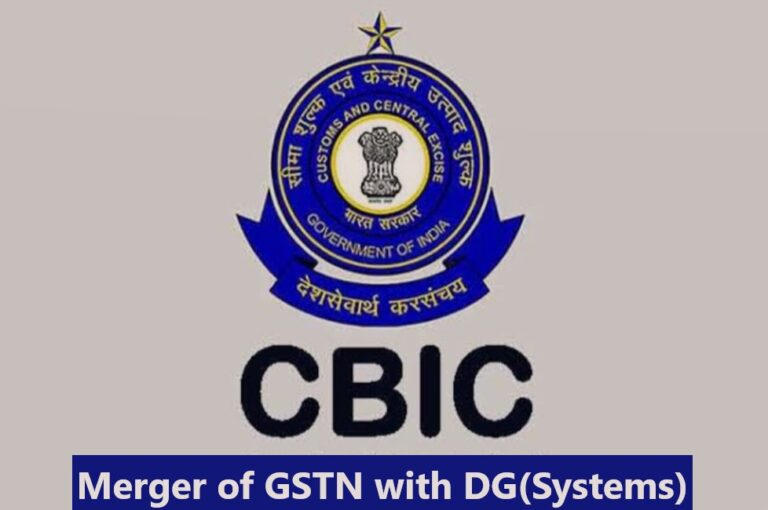The merger of GSTN and DG (Systems) would create a seamless flow of taxpayer data within a single integrated setup (GSTN), as opposed to the current two-pronged approach for detecting tax fraud.
Merger of GSTN with DG(Systems): The Central Board of Indirect Taxes and Customs (CBIC) is considering merging its existing DG (Systems) database with the Goods and Services Tax Network (GSTN) to enhance its taxpayer activity coverage and reduce tax evasion, according to a senior official from the Financial Express. This significant move is expected to take effect in the first week of June.
Currently, the GSTN serves as the “front-end” of the GST-IT ecosystem, facilitating taxpayer interactions, while DG (Systems) operates as the “back-end,” handling tax administration tasks like refunds, investigations, and adjudications. Starting in June, GSTN will take over back-end functions as well, streamlining the system further.
The primary motivation behind this merger is to combat tax evasion. In FY24, the Directorate General of GST Intelligence (DGGI) uncovered over 6,074 cases of duty evasion amounting to more than Rs 2.01 trillion. This figure represents about 10% of the total GST collection for the fiscal year, with voluntary payments totalling Rs 26,598 crore, contributing approximately 1.4% of the total GST collections for FY24. In FY23, there were 4,872 cases of GST evasion detected, involving Rs 1.01 trillion in duty evasion and Rs 20,713 crore in voluntary payments.
Gopal Mundhra, a partner at Economic Laws Practice, stated that the merger of GSTN and DG (Systems) would create a seamless flow of taxpayer data within a single integrated setup (GSTN), as opposed to the current two-pronged approach for detecting tax fraud.
GSTN serves as a uniform IT interface among taxpayers, the Centre, and states, responsible for maintaining the common GST electronic portal. Its functions include facilitating registration, return filing, forwarding returns to Central and state authorities, and computing and settling Integrated GST (IGST).
Conversely, the Directorate General (Systems & Data Management), or DG (Systems), integrates technology into departmental processes. It supports the CBIC and field formations by compiling and disseminating data related to tax collection and associated activities, such as adjudication, appeals, and court cases.
The senior official mentioned that merging the two systems would improve coordination between CGST and SGST officers, aiding in tracking down tax evaders. Shivam Mehta, executive partner at Lakshmikumaran & Sridharan Attorneys, explained that any issues identified by one authority (central or state) could be swiftly addressed by the other if the relevant details are available in the shared database.
Additionally, DG (Systems) manages IT systems for customs operations, including data management for import and export activities and overseeing systems related to central excise duties. The merger would enhance transparency in cross-border transactions (imports and exports), enabling authorities to identify tax evasion more effectively, such as discrepancies in valuation or tax rates applied to imports versus domestic supply.
Tanushree Roy, Director of Indirect Tax at Nangia Andersen India, emphasized that unified access to comprehensive and timely data would allow for more effective monitoring, advanced analytics, and coordinated enforcement actions. This would lead to improved tax compliance, increased efficiency, and reduced tax evasion.
Read More
E-Way Bill 2 Portal Launched with Enhanced Services for Seamless E-Way Bill Management
Government Plans Major Overhaul of GST and Customs Duty to Address Inverted Duty Structure Issues
